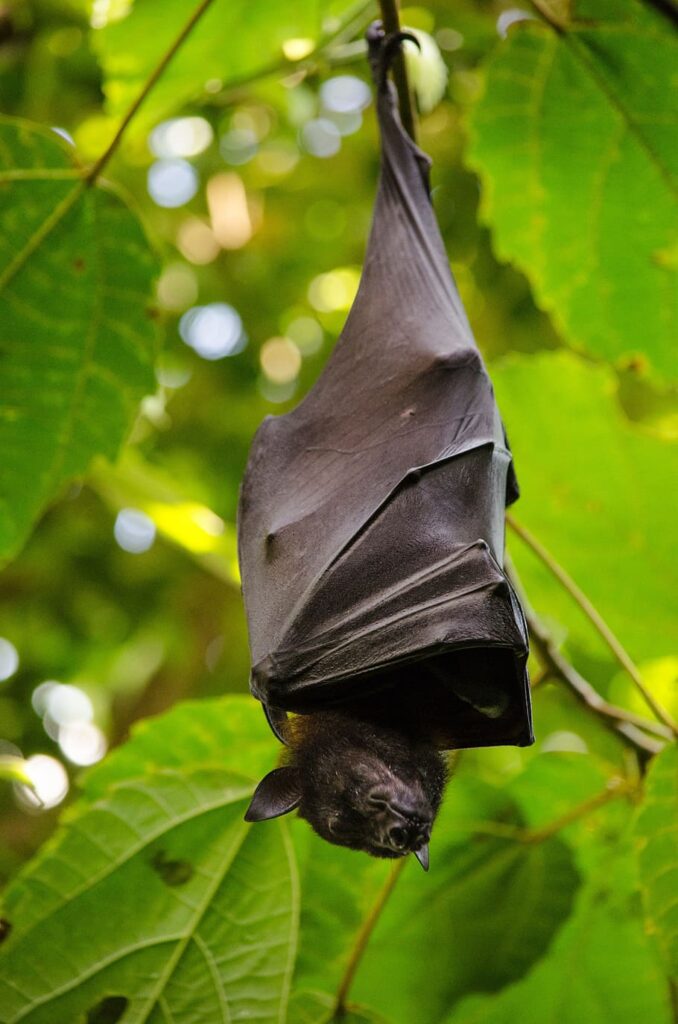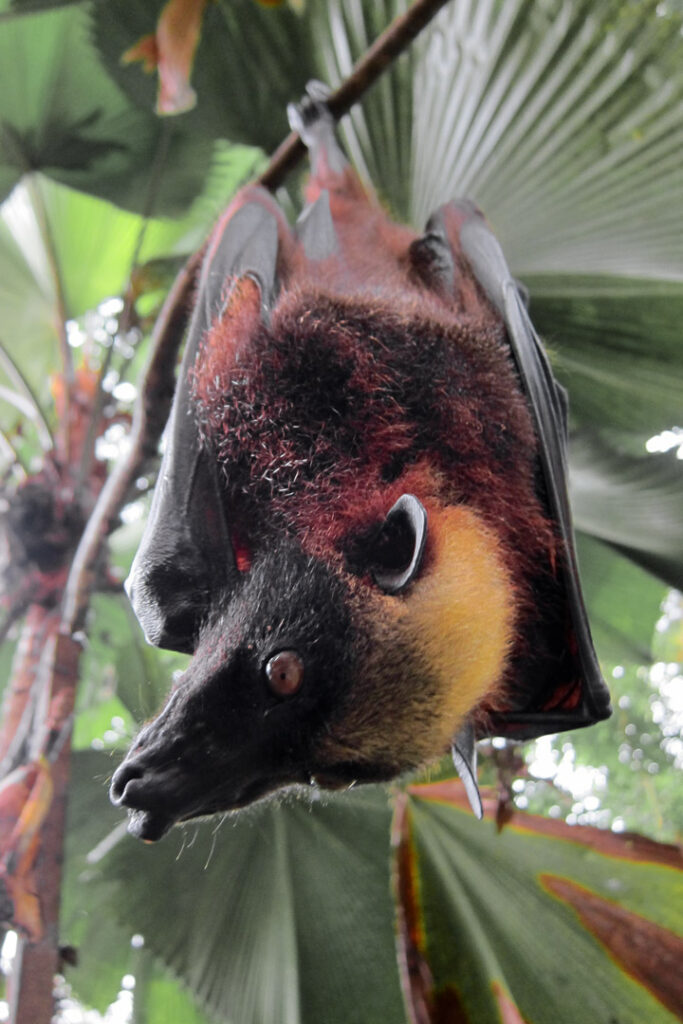The gigantic golden-crowned bat’s wingspan is almost as long as Tom Cruise is tall, making it appear particularly menacing when it flies through the air with its arms and legs stretched wide apart. And when it roosts, a stretchy black cape makes it look like a vampire.
The fruit-eating megabat is native to the Philippines, and despite its large size, it poses no threat to humans.
Sadly, it is threatened with extinction because humans continue to encroach on its habitat and illegally hunt it for sport and food.
People were fascinated and terrified by the shocking size and predatory aspect of these helpless, endangered creatures after seeing viral photographs of them online.
The initial photographs went viral with a misleading description of the creatures as “human-sized” bats, which prompted widespread panic.
So, before we get into discovering these extraordinary animals, we need to clarify a few things.
To begin with, they are not “human-sized” unless you use a very broad definition of the term and consider them to be roughly the size of a “small child” rather than an average adult person.
The enormous golden-crowned bat has a wingspan of around 5 feet, 6 inches, making it one of the largest bat species in the world despite having a relatively small body size (between 7 and 11.4 inches in length and less than 3 pounds in weight).
The nocturnal herbivore bat with the golden, fluffy cap on its head prefers to eat figs and other fruits and vegetables.
The golden-crowned flying fox (Acerodon jubatus) is a megabat species unique to the Philippines; other forms of flying foxes can be found in Asia, Africa, and Australia.
It spends the day sleeping in the treetops, suspended by its clawed feet, surrounded by its pals.
The enormous flying fox, which has a wing span of less than five feet, sleeps among the giant bats on occasion.
Giant golden-crowned flying foxes, in contrast to many other bats, rely on sight and smell instead of echolocation.
The flying fox is tireless in its fight against deforestation, and it serves a crucial function in the diverse forest ecology by spreading fig seeds around after it has eaten.
In spite of the bats’ best efforts, humankind continues to wreck havoc.
Bat Conservation International (BCI) reports that “more than 90 percent of the Philippines’ old-growth forests have been destroyed, and the species has completely disappeared from several of its old roosting sites on multiple islands.”
From 1986 to 2016, the population of golden-crowned bats plummeted by half due to destruction of their natural habitat and hunting for sale, sport, and personal use.
The International Union for the Conservation of Nature (IUCN) has since classified the species as “endangered.”
In theory, bats are protected under the Philippine Wildlife Resources Conservation and Protection Act of 2001, but in practice, this protection is rarely, if ever, enforced.
Even though many roosts are located in designated wildlife preserves, the animals are nevertheless being slaughtered in large numbers.
In a horrifying display of cruelty and inhumanity, hunters have been known to shoot the sleeping animals while they roost, wounding and killing several of them while they still cling to the limb with their toes.
Despite the fact that humans pose a significant threat to bats, flying foxes are not skittish and may often be seen in forests close to human settlements, sitting on telephone poles, or just hanging out.
However, because they are capable of distinguishing between safe and dangerous environments, they will move to and roost in places that people cannot access, such as cliff faces at altitudes of more than 1,000 feet.

Similar in intelligence to dogs, these bats are fast learners with an impressive memory, according to studies.
Researchers used operant conditioning to teach captive-bred flying-fox bats to pull levers in exchange for a drink of fruit juice.
What’s more, the bats instinctively pulled the levers when they were brought back to the experimental chamber three and a half years later.
Some individuals find bats disturbing because of their peculiar look and feel. Their huge eyes, pointed beaks, and leathery wings can be intimidating.
Bats have a poor record for being bloodthirsty, but only three of the roughly 1,300 species are actually known to do so.
The golden-crowned flying foxes are very cute after you get over the initial shock of how creepy they seem.
It’s heartbreaking to think that deforestation is causing the deaths of so many innocent and clever animals.
If you find this tale compelling and believe this species should not be extinguished, please SHARE this post with Family and Friends!




